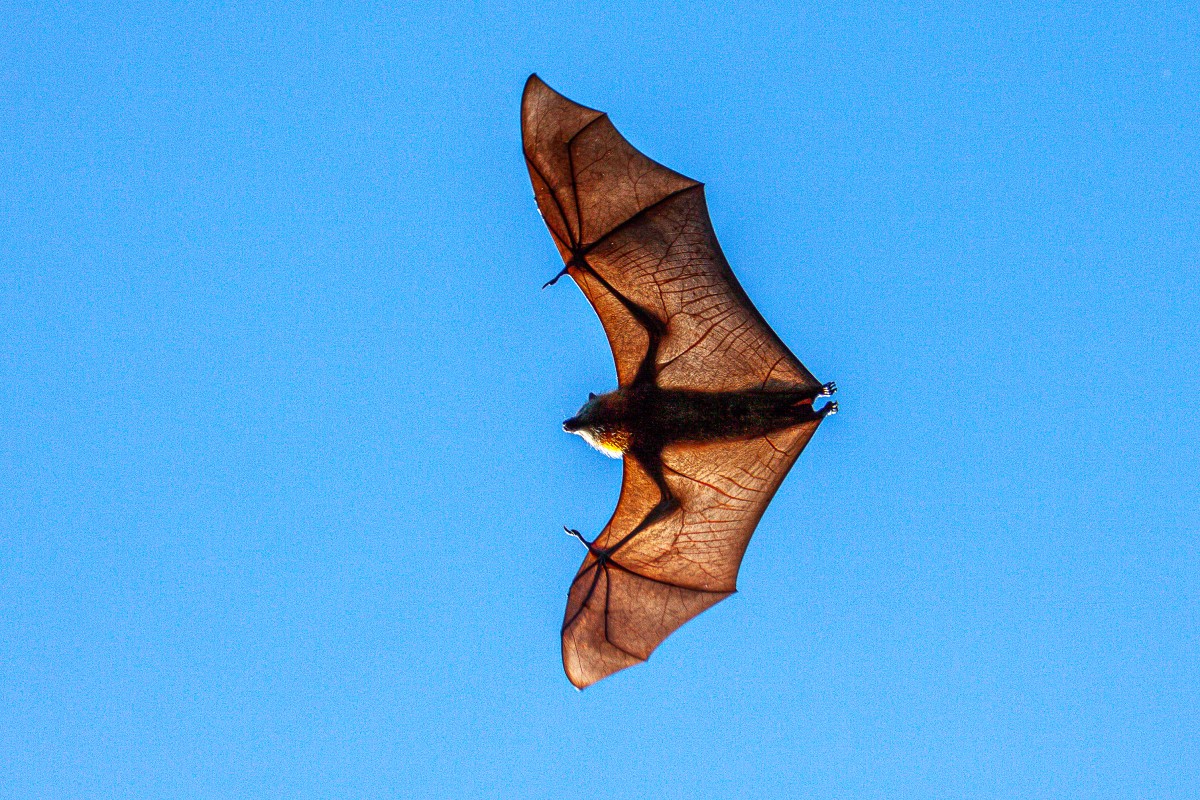- solen.cz - Rabies and lymphocytic choriomeningitis: clinical manifestation, prophylaxis and treatment, RNDr. Ingeborg Režuchová, PhD., Mgr. Lucia Turianová, RNDr. Katarína Lopušná, PhD., Institute of Virology, Biomedical Centre, Slovak Academy of Sciences, Bratislava, doc. RNDr. Peter Kabát, CSc, Institute of Virology, Biomedical Centre, Slovak Academy of Sciences, Bratislava and Department of Microbiology and Virology, Faculty of Science, Charles University, Bratislava
- sciencedirect.com - Rabies in Europe: An epidemiological and clinical update
- europepmc.org - Can rabies be eradicated?
- sciencedirect.com -Rabies.
What is rabies? How does it spread and manifest itself in humans? + Vaccination

In the Middle Ages, it was thought to be demonic possession or a disease caused by cosmic phenomena. What is rabies, how is it spread, manifested and treated?
Most common symptoms
- Muscle Pain
- Malaise
- Headache
- Sore Throat
- Sensitivity to light
- Fever
- Spirituality
- Hallucinations and delusions
- Sweating
- Indigestion
- Nausea
- Defence
- Swallowing disorders
- Disorders of consciousness
- Muscle cramps
- Itchy skin
- Head spinning
- Fatigue
- Anxiety
- Confusion
- Increased body temperature
- Increased saliva production
Characteristics
Rabies is one of the infectious diseases that affect the nervous system. It belongs to the so-called anthropozoonoses. This means that it is transmitted to humans by an infectious route from an infected animal.
The disease is caused by a virus that belongs to the so-called lyssaviruses. The rabies virus is widespread everywhere in the world. The incidence is reported from more than 150 countries on all continents. The only exception is Antarctica.
In the Middle Ages, the disease was thought to be demonic possession or a disease caused by cosmic phenomena. Its infectious nature was only discovered by Georg Gottfried Zinke in 1804, when he used saliva to transmit the disease from a sick dog to a healthy one.
The greatest discovery was made by Louis Pasteur in the 19th century. He proved the viral origin of the disease and was one of the two creators of the first effective vaccine against rabies.
Approximately 60,000 people die from rabies each year, mainly in developing countries in Africa and Asia. Up to 40% of all rabies cases are children under the age of 15.
The most typical mode of transmission is dog bites, especially in rural areas.
Rabies = Latin for rabies.
According to the WHO (World Health Organization), the incidence of rabies in Europe has been stable over the last 10 years (2010-2019). In 2019, the WHO has designated countries such as Russia and Moldova as endemic for canine rabies and Turkey as endemic for human rabies.
Causes
The rabies virus belongs to the lyssavirus family. It is characterised by its so-called ecological association, i.e. it tends to belong only to a certain species of mammal. These mammals then act as carriers of the virus to humans.
The vast majority of human infections are caused by the bite of an infected dog.
Among wild animals, the most common hosts are wolves, foxes, rats, hamsters, polecats, squirrels, cats, rabbits and cattle.

A specific mode of infection is the bat bite, which has become a very common mode of transmission in recent times. The rabies virus, acquired specifically after a bat bite, is highly infectious. It multiplies very rapidly at the point of entry, i.e. in the bite wound.
Rare routes of transmission are, for example, organ transplants, most commonly after corneal transplants. Infections have also been described after ingestion of infected meat, through wounded skin or mucous membranes, inhalation of aerosols in the laboratory or even by staying in a cave with a high number of bats that have been infected with rabies virus.

This is a neurotropic virus that affects the nerves and spreads through them.
Once it enters the body, it multiplies rapidly at the site of inoculation (bite, inhalation, cornea). It spreads along the long processes of nerve cells, called axons. It spreads in both directions and at high speeds, reaching up to 3 mm/hr.
On its way to the central nervous system (brain and spinal cord), the virus binds to neuromuscular discs in the striated muscles (muscles controlled by the will), but also to fine nerve endings in the skin, cornea and salivary glands.
The virus targets the spinal cord and brain, where it causes a serious disease called encephalomyelitis, an advanced stage of the disease that can end in necrosis (death) of nerve cells.
The virus multiplies in the spinal cord, hippocampus, brain stem, cerebellum. From there it spreads by centrifugal transmission to virtually all innervated organs of the body.
Symptoms
Symptoms of rabies may not always appear after infection. However, if they do appear, rabies is almost always fatal.
Symptoms of the first stage of the disease include
- Fever
- malaise
- headache
- nausea
- sore throat
- inflammation of the upper respiratory tract
- anxiety and irritability
Over time, slightly more severe and specific symptoms start to appear
- sensitivity to wind, strong light and noise
- hypersensitivity to pain, heat and cold
- unnaturally dilated eye pupils
- confusion
- behavioural and personality changes
- itching and tingling where the virus has entered the body
Symptoms of the second stage of rabies are more severe and typical of this infection
- confusion and excessive activity
- increased anxiety and fear in the patient, alternating with melancholy
- uncoordinated eye movements
- asymmetrical dilation and constriction of the pupils, laterally asymmetrical
- painful cornea
- flaccid muscles around the bite, e.g. on the face
- incontinence of urine and faeces or, conversely, constipation
- arrhythmia caused by involvement of important brain centres
- increased respiratory rate alternating with shortness of breath
- diabetes insipidus - a syndrome of excessive urine output associated with constant thirst
- increased salivation
- excessive sweating
- piloerection - erect pubic hair
- photophobia - hypersensitivity to light
- priapism - painful spontaneous erection without sexual stimulus
- spontaneous ejaculation
A very characteristic manifestation of rabies in humans is hydrophobia. The patient is unable to swallow fluids due to spasms of the throat muscles that are responsible for swallowing and breathing. Sudden spasm of these muscles can cause suffocation and eventually death of the patient.
Symptoms in the third and final stage
- fever is almost always present and unresponsive to antipyretics
- paralysis of almost all muscles
- swallowing is possible, but with great difficulty
- numbness to stiffness of the whole body
- coma
- peripheral nerve failure
Death is caused by asphyxiation due to complete paralysis of the respiratory muscles.
Symptoms of the non-classical form
- myoclonus - irregular twitching of the limb muscles
- hemiparesis - paralysis of half the body
- rotational dizziness
- seizures
- hallucinations
- intermittent nocturnal agitation
Diagnostics
The diagnosis of rabies is based primarily on clinical suspicion of this infection.
First, epidemiological criteria and exposure to or bite by an animal in a rabies endemic area are assessed.
After this consideration and the suspicion of rabies infection, the challenging diagnostic investigation begins.
There are several modern laboratory methodologies that can confirm the presence of the virus.
The direct fluorescent antibody (DFA) test is considered the gold standard in the diagnosis of rabies. The direct rapid immunohistochemical test (dRIT) is expensive but very effective. It is as reliable as DFA in terms of specificity and sensitivity.
Polymerase chain reaction (RT-PCR) for detection of RNA virus can be used to test saliva, hair or skin containing hair follicles, liquor and urine.
Neuroimaging methods, particularly magnetic resonance imaging (MRI) and electroencephalogram (EEG), are particularly useful in the differential diagnosis of other diseases causing encephalitis. We can also assess the extent of brain involvement, the presence of brain swelling or oedema, or cerebral haemorrhage.
Magnetic resonance images in patients with rabies may differ from each other. There is no definitive finding that confirms the involvement of brain tissue by rabies. This is due to concomitant pathological processes that occur as a result of global inflammation of the brain. Complications such as hypoxia, shock, haemorrhage and others may occur that alter the magnetic resonance image for the duration of the disease.
As the disease progresses and reaches the coma stage, the virus causes neuronal damage. The damage may be visible as luminal lesions in the brain tissue. In addition, there is severe disruption of the blood-brain barrier.
There were no differences in neuroimaging between rabies caused by dog and bat bites.
The EEG changes are non-specific. At present, they have no clear diagnostic significance.
Modern diagnostic equipment such as MRI and EEG are available in most hospitals. Nevertheless, early recognition of clinical signs and a detailed history of injury or contact with the animal remain the most important points in diagnosis.
The definitive diagnosis of rabies is made ante mortem, i.e. after the death of the patient on the autopsy table. This includes direct or indirect confirmation of the presence of the virus in saliva, serum, liquor and from skin biopsies of the neck.
Rabies virus can also be detected post mortem in brain tissue samples viewed under an electron microscope. The so-called Negri bodies are visible. These are characteristic bodies that form in the cytoplasm of the host cell during infection.
Course
The incubation period, i.e. the time between the bite and the first symptom, is on average 20-90 days. In rare cases it can be up to 1-6 years or even longer.
The longer the incubation period of rabies, the more severe the symptoms will be.
The length of the incubation period depends mainly on the point of entry of the virus and the amount of virus transmitted. The site of the bite is also important.
If the injury is close to the CNS, for example on the neck, face or elsewhere on the head, the incubation period is significantly reduced.
Rabies typically follows a 3-phase course:
1. The first, prodromal stage.
The prodromal stage lasts approximately 2 to 10 days.
Symptoms are not specific. They resemble a common virus or flu.
2. The second stage, the excitatory phase of the disease
Occurs in 80% of those infected.
In this stage, acute neurological symptoms due to ongoing encephalitis, i.e. acute inflammation of the brain, are pronounced.
The inflammation affects the cerebral cortex, basal ganglia and brain stem. Symptoms of this stage last for several days to a week.
3. The third stage, the paralytic phase of rabies
This stage is characterized by mild muscle paralysis.
There is also a so-called silent form of the third stage of rabies. In this case, paralysis occurs without a previous excitatory phase.
In this stage, the nerves are demyelinated. They lose their sheath and thus their function. There is also a complete loss of axons.
Complete paralysis affects only 20% of cases.
4. Non-classical form of rabies
It seems to be more common after a bat bite. But it can also occur after a dog bite.
It is characterised by neuropathic pain associated with radicular pain. Sensory or motor deficits are present.
The affected person may move his limbs uncoordinatedly, especially the one where he was bitten.
According to a review of the world literature, only 28 patients have survived symptomatic rabies infection after 6 months. However, the vast majority of them have developed severe neurological sequelae.
Prevention
There is currently no effective treatment for rabies. Therefore, prevention plays a key role in preventing human deaths from rabies.
The principle of effective prevention is based on three main pillars:
- awareness of the disease and education of those at risk.
- dog health and wildlife control
- vaccination of the population at risk
Screening for rabies infection and the creation of up-to-date epidemiological maps are essential to locate and eradicate rabies outbreaks in wildlife.
Surveillance and veterinary control, especially of stray dogs and cats, is important. Vaccination coverage of domestic animals should reach 70 % to prevent the introduction of rabies from the 'wild' into domestic dwellings near people.

Post-exposure prophylaxis
For the best chance of recovery, the first dose of post-exposure vaccine should be given to the patient as soon as possible after the bite.
Cases where patients have been saved after rabies infection are very rare. Only three such cases are known so far.
These include a six-year-old boy from Ohio, a 15-year-old girl from Wisconsin and an eight-year-old girl from California.
In one case, a scratch from an infected cat.
The invention of post-exposure vaccination was credited to a well-known French physician. In 1885, Louis Pasteur, in collaboration with Pierre Paul Emile Roux, made the first attempt at post-exposure vaccination, which was successful.
Since then, inactivated vaccines produced on cell cultures have been used to achieve post-exposure prophylaxis.
In adults, the vaccine is administered by intramuscular injection into the deltoid muscle of the shoulder. In children older than 2 years, it is injected into the anterolateral thigh.
Vaccination is given in a total of five doses, on the day of the bite and on days 3, 7, 14 and 30 after the bite.
Persons with a persistent risk of rabies should be actively immunised before infection, such as those working with animals, living in or travelling to endemic areas. They should also have their antibody titre measured every 6 months and be re-vaccinated if the antibody titre falls below 0.5 IU/ml.
How it is treated: Rabies
Treatment of rabies - can it be treated?
Show moreVideo - Manifestations and spread of rabies in humans
Rabies is treated by
Other names
Interesting resources
Related










